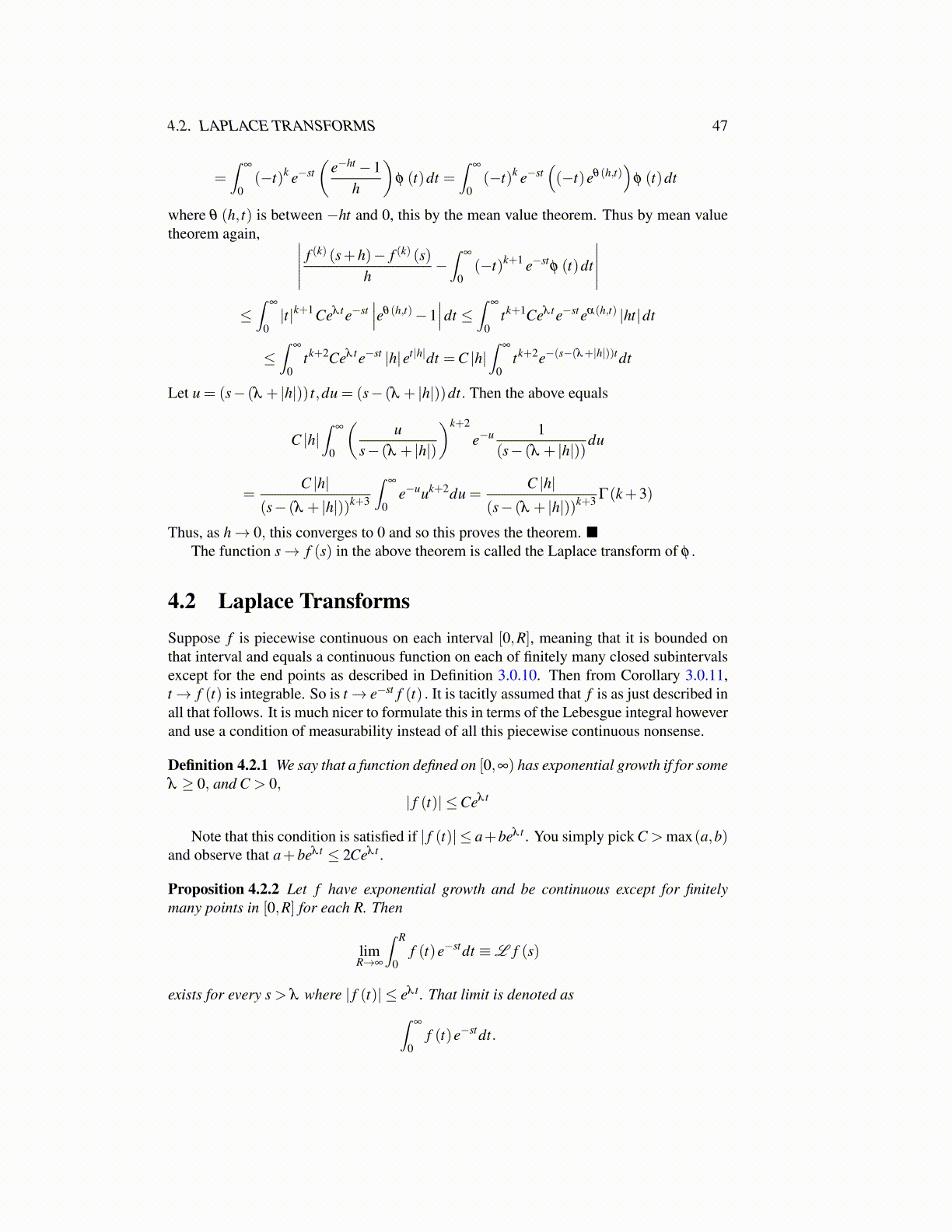
4.2. LAPLACE TRANSFORMS 47
=∫
∞
0(−t)k e−st
(e−ht −1
h
)φ (t)dt =
∫∞
0(−t)k e−st
((−t)eθ(h,t)
)φ (t)dt
where θ (h, t) is between −ht and 0, this by the mean value theorem. Thus by mean valuetheorem again, ∣∣∣∣∣ f (k) (s+h)− f (k) (s)
h−∫
∞
0(−t)k+1 e−st
φ (t)dt
∣∣∣∣∣≤∫
∞
0|t|k+1 Ceλ te−st
∣∣∣eθ(h,t)−1∣∣∣dt ≤
∫∞
0tk+1Ceλ te−steα(h,t) |ht|dt
≤∫
∞
0tk+2Ceλ te−st |h|et|h|dt =C |h|
∫∞
0tk+2e−(s−(λ+|h|))tdt
Let u = (s− (λ + |h|)) t,du = (s− (λ + |h|))dt. Then the above equals
C |h|∫
∞
0
(u
s− (λ + |h|)
)k+2
e−u 1(s− (λ + |h|))
du
=C |h|
(s− (λ + |h|))k+3
∫∞
0e−uuk+2du =
C |h|(s− (λ + |h|))k+3 Γ(k+3)
Thus, as h→ 0, this converges to 0 and so this proves the theorem. ■The function s→ f (s) in the above theorem is called the Laplace transform of φ .
4.2 Laplace TransformsSuppose f is piecewise continuous on each interval [0,R], meaning that it is bounded onthat interval and equals a continuous function on each of finitely many closed subintervalsexcept for the end points as described in Definition 3.0.10. Then from Corollary 3.0.11,t→ f (t) is integrable. So is t→ e−st f (t) . It is tacitly assumed that f is as just described inall that follows. It is much nicer to formulate this in terms of the Lebesgue integral howeverand use a condition of measurability instead of all this piecewise continuous nonsense.
Definition 4.2.1 We say that a function defined on [0,∞) has exponential growth if for someλ ≥ 0, and C > 0,
| f (t)| ≤Ceλ t
Note that this condition is satisfied if | f (t)| ≤ a+beλ t . You simply pick C > max(a,b)and observe that a+beλ t ≤ 2Ceλ t .
Proposition 4.2.2 Let f have exponential growth and be continuous except for finitelymany points in [0,R] for each R. Then
limR→∞
∫ R
0f (t)e−stdt ≡L f (s)
exists for every s > λ where | f (t)| ≤ eλ t . That limit is denoted as∫∞
0f (t)e−stdt.